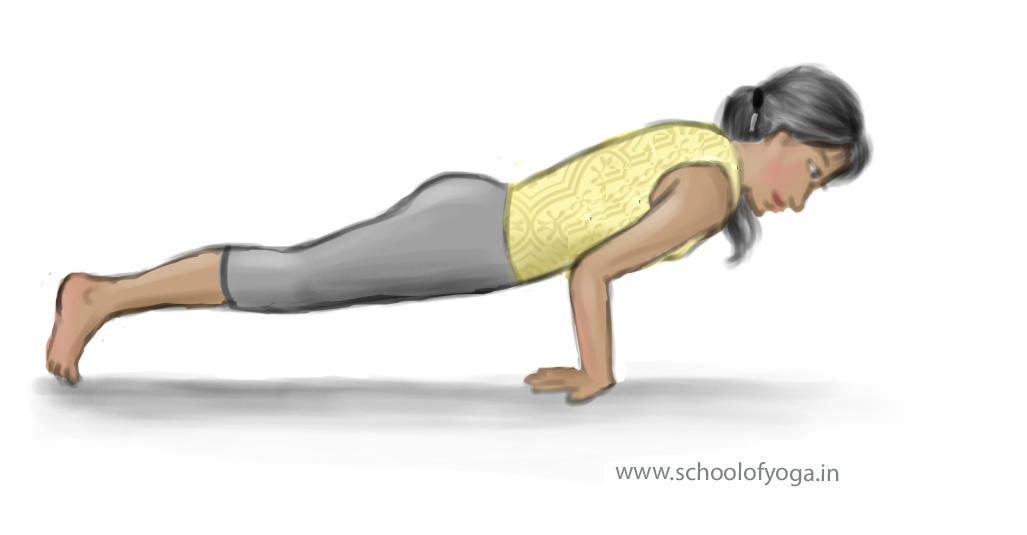School of Yoga explains hamsasana (swan pose)

Hamsasana technique:
- Sthithi (starting) pose: Squat in veerasana.
- Sit erect on the “V” of heels and knees.
- Bend forward to kneel on the ground.
- Bring forearms together such that little fingers of both hands are touching.
- Plant palms firmly on the ground near knees with fingers facing knee and with inside of the forearm facing out.
- Inhale partially, let abdomen fall gently on the back of the joined elbows such that elbows are in the region of the navel, and on either side of the rectus abdominis muscles (abs).
- Stretch legs back one at a time and stiffen them. Stand on your toes.
- Retaining the breath, bend forward on the hands such that legs are balanced on the toes and weight of torso is on the hands. Legs should remain straight as well as stretched and buttocks contracted.
- Retain for 5 counts. Repeat 3 times.
- The drishti (gaze) recommended is manipura-chakra.
Hamsasana benefits:
- When this exercise is done, the organs within the abdominal cavity are placed under pressure. Consequently, this increases intra-abdominal pressure and induces peristalsis. As a result, there is very good evacuation of the bowels.
- The intra-abdominal massage also ensures good blood supply to all muscles within the abdomen ensuring optimum functioning.
- This exercise is very good for removing constipation and piles.
- This exercise is very good for improving functioning of the liver, pancreas and kidneys.
- The action of lifting the legs strengthens the muscles of wrist, forearms and lower back.
- Since this exercise is done with half breath, it stabilises the pressure in the middle ear and trachea.
Hamsasana contraindication:
- People with cardiac, hernia, kidney or liver problems should attempt this asana after first consulting a physician.
- Also, people with lower back problems or carpal tunnel must perform this asana only under supervision of a physician.
- Do not perform this asana during menstruation or pregnancy.
Some noteworthy points on hamsasana:
Internal Links: Dharma (conditioning), Stress and Situational Awareness, Prana, Asana overview 1, Asana Overview 2, Asana Focus or gazing, Pranayama, Mayurasana
External Links: Prana, Chakra, Pancha Tattva, Pancha Prana, Pancha Kosha, Nadi,
- People with cardiac ailments should do this exercise slowly because of the aerobic nature of the asana.
- This asana is similar to mayurasana. In fact, one may practice hamsasana before attempting mayurasana. However, the benefits of hamsasana are lower than mayurasana.
- One of the problems in performing this asana is maintaining both, axial (along the length of the body) and lateral (balance between the hands) balance. Therefore, one could keep the hands slightly apart such that the elbows sit on either side of the abdominal muscle (abs). As a result, this increases lateral balance.
- People suffering from carpal tunnel will find this exercise difficult to perform. There will be severe pain at the wrist. Hence, one should first perform wrist movement and strengthening exercises before slowly increasing load on the wrists. Also, if the pain continues, stop.
- The reason one is asked to take a half breath as in shalabasana is to ensure that the abdomen is not unduly stressed. In complete exhalation, the abdominal viscera would be loosely packed in the abdomen, while after complete inhalation; the abdomen would be tight, leading to stomach cramps. So, this is avoided by taking a half breath whereby the abdomen is not stressed.